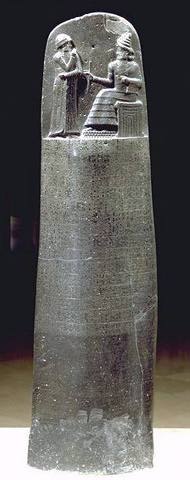Click on Picture to Return to Text of Procedure
The principal (and only considerable) source of the Code of Hammurabi is the stela discovered at Susa in 1901 by the French Orientalist Jean-Vincent Scheil and now preserved in the Louvre in Paris.
The background of the code is a body of Sumerian customary law under which civilized communities had lived for many centuries. The existing text is in the Akkadian (Semitic) language; but, even though no Sumerian version is known to survive, the code was meant to be applied to a wider realm than any single country and to integrate Semitic and Sumerian traditions and peoples. It is typical of early customary compilations of law in its use of the ordeal, and the its use of the lex talionis (i.e., an eye for an eye, a tooth for a tooth).
